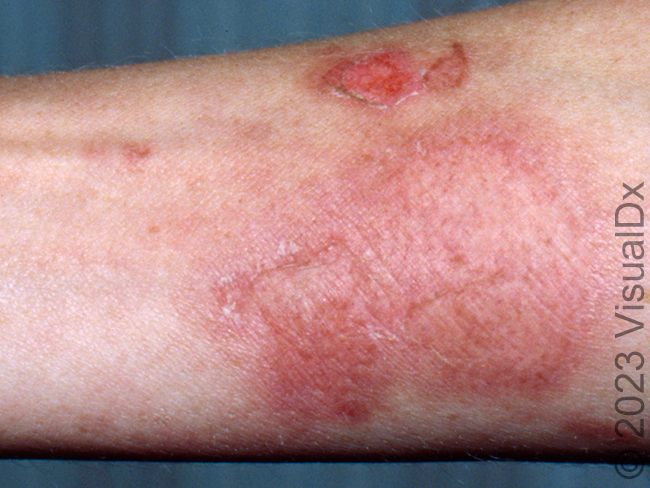Published on

Differential Diagnosis
- Arthropod bites or stings
- Hogweed dermatitis
- Solar urticaria
- Sunburn
Diagnosis
The correct diagnosis in this case is hogweed dermatitis. Exposure to the giant hogweed plant (Heracleum mantegazzianum) can cause phytophotodermatitis, especially in sunlit environments. A toxic psoralen present in the sap, furocoumarin, is highly lipid-soluble and penetrates into the epidermis. Absorption of ultraviolet A by the psoralens leads to nucleic acid damage and formation of free radicals. Subsequent cell death leads to the quick formation of painful blisters.
What to Look For
- Preceding the skin lesions, the patient may experience a burning sensation. This is followed by erythema, edema, and vesicle formation within 24 hours of contact with the hogweed sap
- If severe, patients experience headaches and generalized fatigue; they may also complain of feeling hot
- Contact of the sap with the eyes can cause temporary or even permanent blindness
- Symptoms usually develop within 18-48 hours following contact with the sap and sunlight exposure, and symptoms may continue for a month
- The plant is large with a hollow stem, and children may be inclined to use it as a play telescope or sword
Pearls for Urgent Care Management
- Ensure the area has been cleaned with soap and water to remove all sap
- Initial treatment is with a topical steroid
- Use over-the-counter non-steroidal anti-inflammatories for pain management
- If the patient has severe wounds, demonstrating 2nd or 3rd degree burns, contact a burn center
Read More
- Case Of A Nonhealing ‘Sunburn’ On A Toddler
- A 43-Year-Old Man With Pruritic, Scale Plaque And Vesicles On His Hands And Arms
- Hogweed Dermatitis
29-Year-Old With Stinging Sensation
1 2
